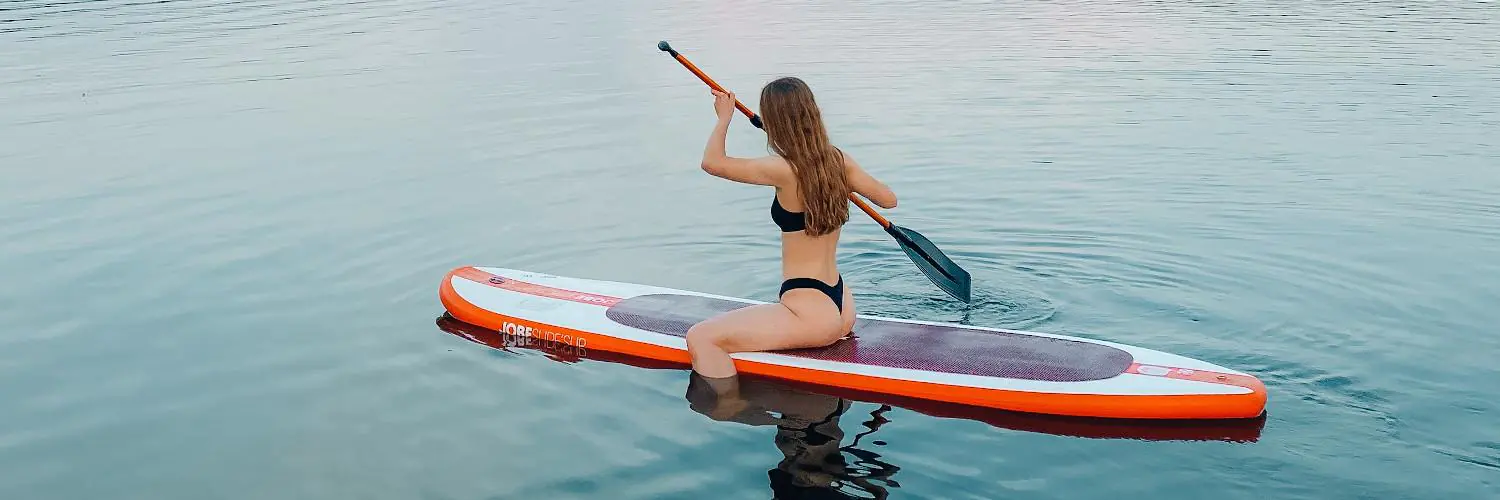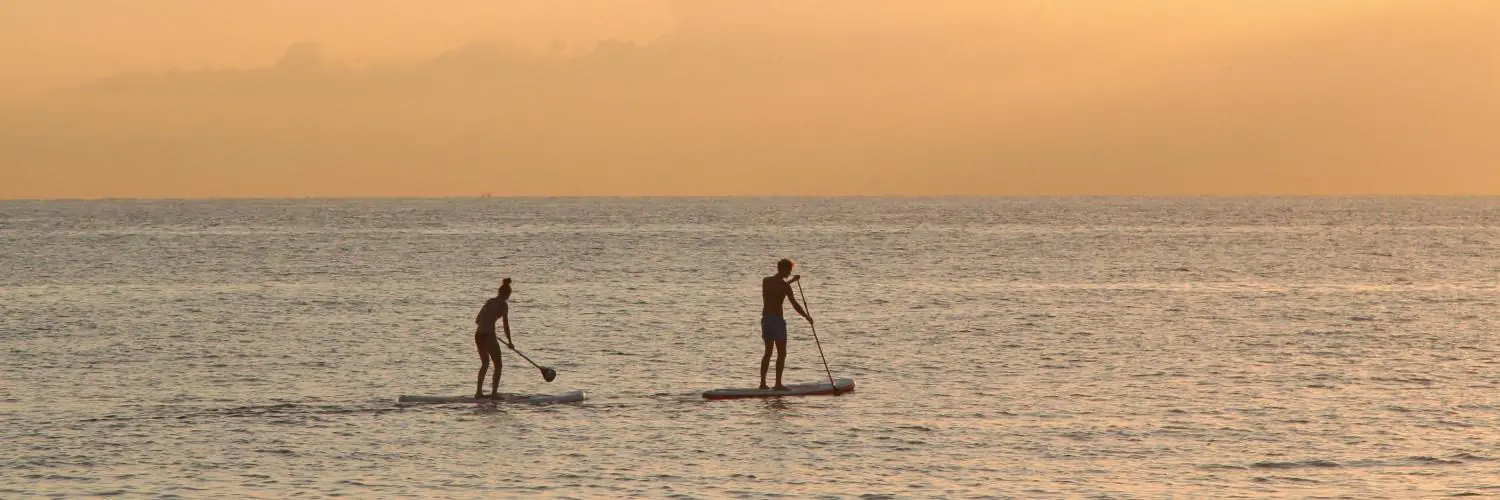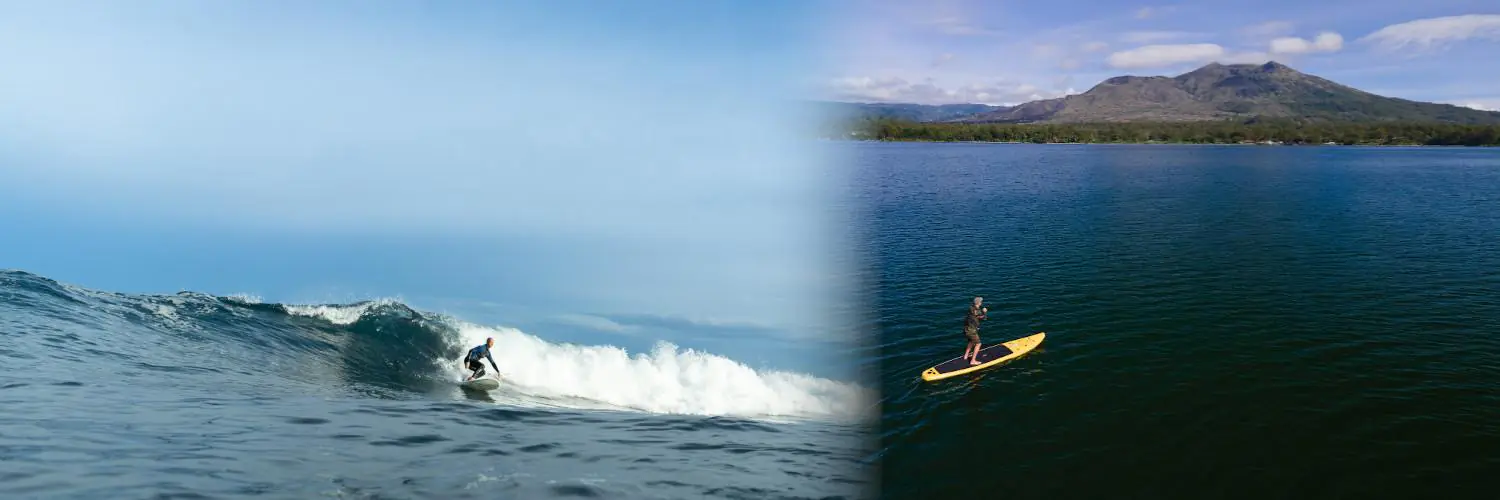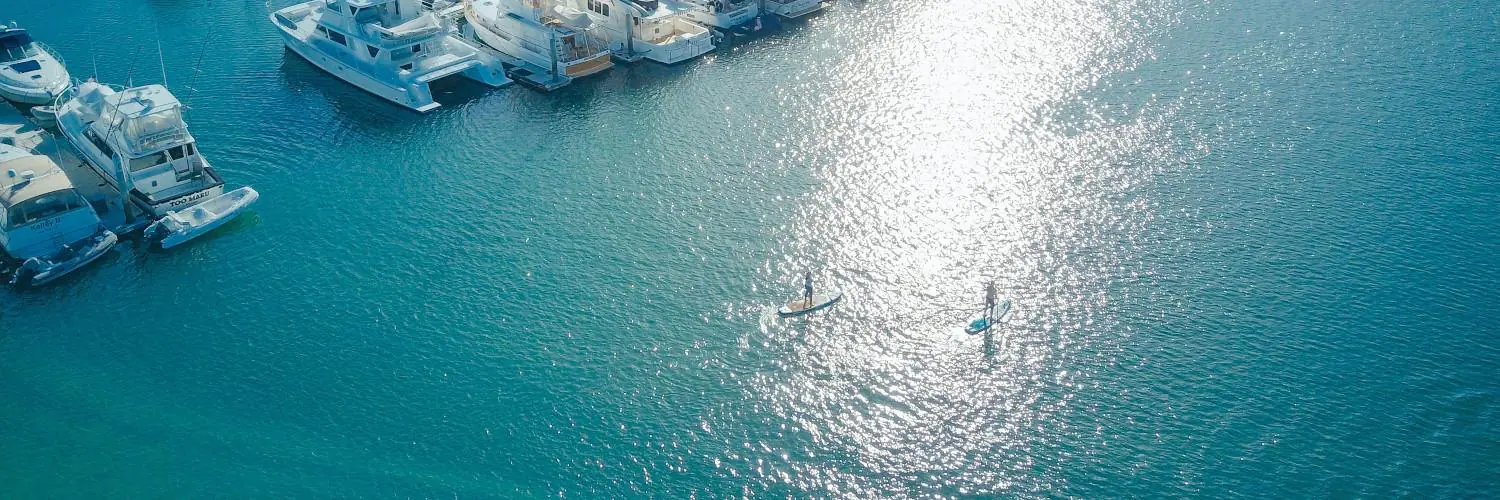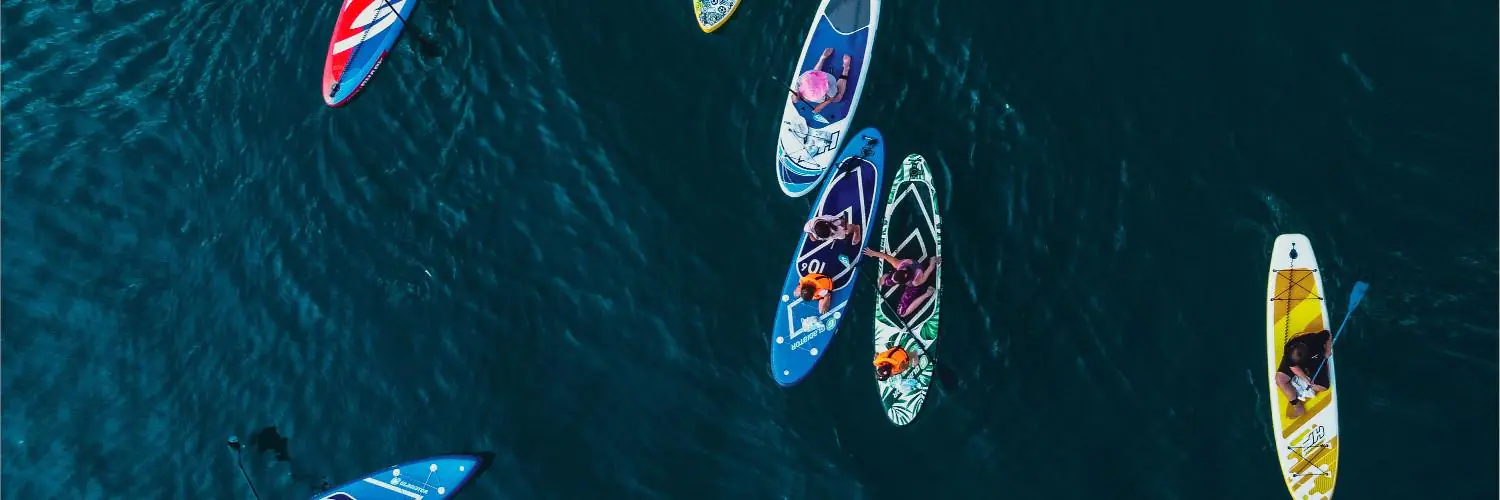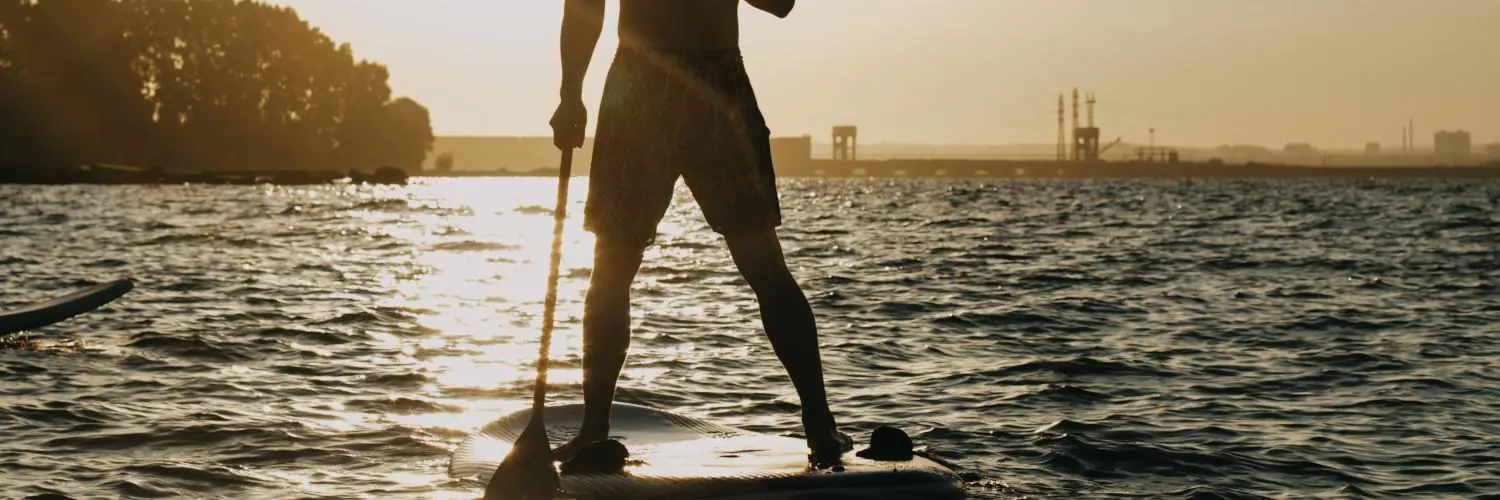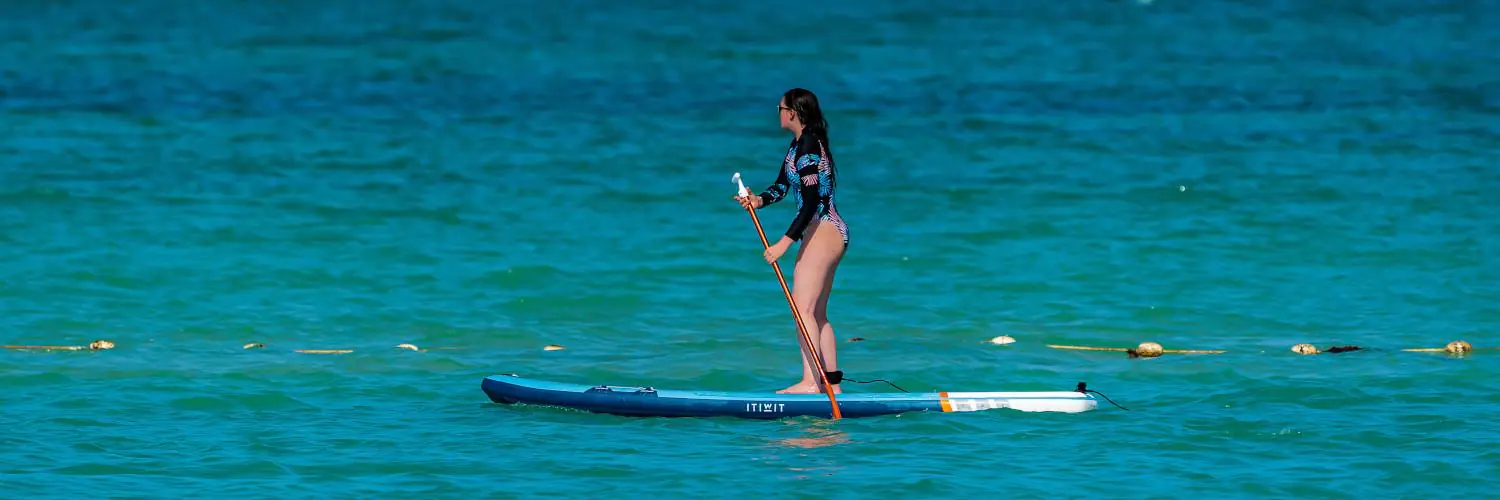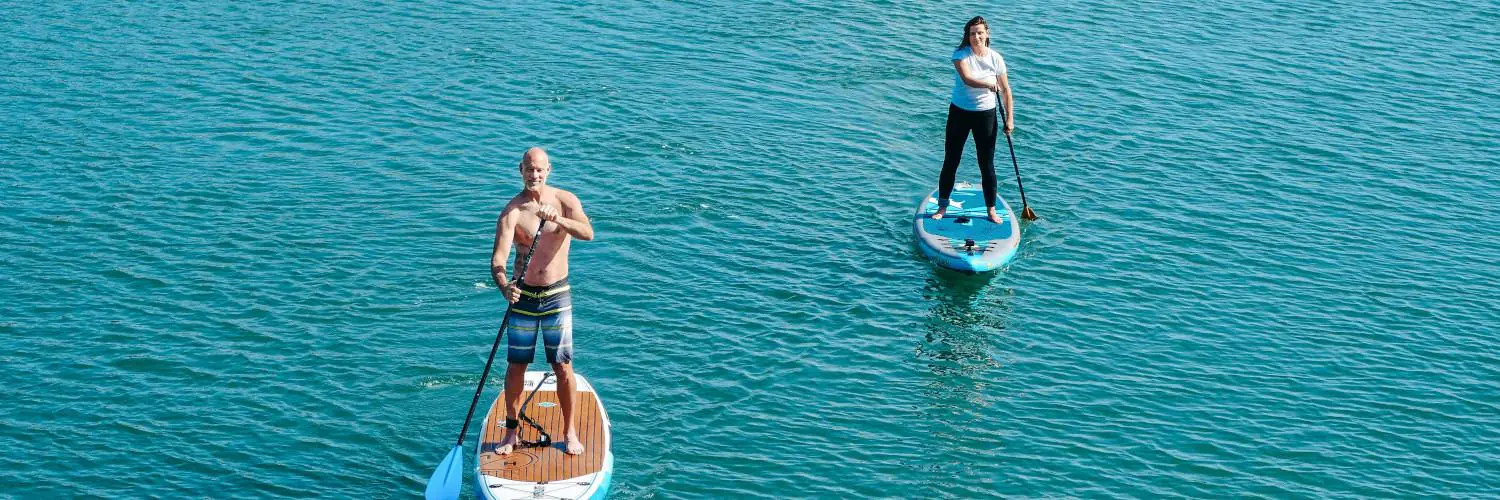Stand up paddleboarding, commonly referred to as SUP, has solidified its presence in Australia’s vibrant watersport culture. With its extensive coastlines, river systems, and iconic harbors, the country offers a plethora of environments for SUP enthusiasts of all skill levels. The sport’s appeal lies in its accessibility and the full-body workout it provides, blending balance, strength, and endurance in a way that’s as challenging as it is rewarding.
Australia’s market has responded to this growing interest with a diverse range of SUP options. Innovations such as JP Australia’s exclusively developed welded seams in their inflatable boards underline a commitment to durability and performance. SUP Gear Australia, on the other hand, caters to a broad spectrum of paddleboarding needs with their assortment of boards designed for various conditions, be it surf, flat water, or ocean downwinding.
The Australian landscape itself is a natural draw for paddleboarding. Destinations like Byron Bay in New South Wales, Nitmiluk Gorge in the Northern Territory, and Boodjamulla National Park in Queensland are only a few examples of the breathtaking locations available to paddlers. Each spot offers unique experiences from tranquil paddles in calm waters to adventurous excursions along wild coastlines, showcasing the sport’s versatility and the natural beauty of Australia’s waterways.
Table of Contents
Origins and Popularity of SUP in Australia
Stand Up Paddle Boarding (SUP) has seen a significant rise in popularity within Australia, where the vast coastline and varied waterways offer ideal conditions for the sport. SUP originated in Hawaii in the 1960s, when instructors stood on longboards using outrigger paddles to photograph tourists learning to surf. Over the years, this practice evolved into the sport we know today, and it spread to Australia, where it resonated with the country’s strong beach culture.
Stand Up Paddle Boarding captures the essence of simplicity and adventure, making it accessible to beginners and offering fun experiences for all skill levels. Australia’s SUP community has grown rapidly, with both locals and tourists embracing the sport. The inclusive nature of paddleboarding contributes to its widespread appeal, as individuals can engage in it for leisure, fitness, or exploration.
Australian waters accommodate a variety of paddleboarding activities:
- Calm Water Paddling: Ideal for beginners, offering a leisurely experience.
- Ocean Paddling: For more experienced individuals seeking waves and excitement.
- Racing: Competitive events for enthusiastic paddle boarders.
Stand Up Paddle Boarding benefits from being both an individual and group activity. Its popularity is partially due to the minimal equipment required—just a paddle board and a paddle—allowing enthusiasts to quickly set out on the water.
Australia’s embrace of SUP aligns with the culture’s affinity for outdoor sports and connection to the sea. It continues to attract people seeking a straightforward yet rewarding way to explore Australia’s scenic waterways.
Choosing the Right SUP Equipment
When selecting stand up paddle (SUP) equipment, it’s crucial to consider the board and paddle specifications that best match the user’s skill level and water conditions.
Assessing SUP Boards and Paddles
For beginners, all-around SUP boards are typically recommended due to their versatility. They often range in length from 10 to 12 feet, with a width of approximately 32 inches, which provides a stable platform for learning. An inflatable stand up paddle board, like the FunWater SUP Inflatable Stand Up Paddle Board, is a popular choice for its convenience and portability.
- Paddles should match the paddler’s height and the type of paddling they intend to do. A rule of thumb is to choose a paddle that is about 6 to 8 inches taller than the user.
Factors Impacting Performance and Stability
The size and shape of the SUP determine its performance. A longer board will typically be faster, while a wider board provides more stability, ideal for beginners or those practicing SUP yoga.
- Length: Suitable for beginners is between 9’6" and 11’6"
- Width: Ideal for most beginners lies between 30" to 34"
- Thickness: Ranges from 4" to 6"; thicker boards are more rigid
A SUP’s thickness affects its rigidity; in general, a board with a thickness of 6 inches will maintain its shape better and provide a more stable ride than thinner models.
Safety and Durability Considerations
For safety, investing in a quality leash is important for keeping the SUP tethered to the paddler, reducing the risk of separation. SUPs made from military-grade PVC offer high durability, making them suitable for a range of conditions and reducing the likelihood of damage from impacts.
- Materials: Military-grade PVC is known for its durability and is commonly used in inflatable boards.
- Leash: Always ensure the leash is strong and comfortably fits around the ankle or calf.
Choice of equipment should factor in the paddler’s age and experience; younger or lighter paddlers may prefer a more lightweight board for easier handling.
Popular SUP Destinations in Australia
Australia boasts an abundance of ideal locations for stand-up paddleboarding, offering a variety of experiences from its vibrant coastal regions to serene inland rivers teeming with marine life.
Coastal Hotspots for Paddle Boarding
Byron Bay, in New South Wales, is synonymous with excellent paddleboarding conditions, accommodating surfers chasing the South Pacific Ocean’s playful waves to individuals seeking the calm of its iconic beaches. Venturing south, Manly Beach near Sydney presents a harmonious balance between urban convenience and natural beauty, making it a sought-after destination for paddlers of all levels.
Tasmania’s Hobart caters to those seeking tranquility on the water, with peaceful coves and the chance to encounter marine life including local fish species in its pristine waters. Alongside peaceful Hobart, Seacliff Beach provides paddlers with picturesque scenes of the local coastline coupled with a chance for dolphin sightings.
-
New South Wales:
- Byron Bay: Vibrant beach culture, occasional festival backdrops.
- Manly Beach: Urban accessibility, family-friendly waters.
-
Tasmania:
- Hobart: Settings range from calm coves to open bays.
- Seacliff Beach: Dolphin encounters and scenic paddling.
Inland Waterways and River Adventures
The calmness of Queensland’s Currumbin Creek offers a gentle introduction to freshwater SUP, with its clear waters and lush surroundings being quintessential of Australia’s natural beauty. In the heart of the country, Nitmiluk (Katherine) Gorge in the Northern Territory presents a dramatic backdrop for more adventurous excursions.
Swan River flows through the heart of Perth, allowing paddlers to explore Western Australia’s capital from a unique perspective, while the Derwent River in Tasmania is an ideal spot for those looking to meander through nature while spotting various wildlife.
-
Northern Territory:
- Nitmiluk Gorge: Dramatic cliffs, rich cultural heritage.
-
Western Australia:
- Swan River: Perth cityscapes, abundant birdlife.
-
Queensland:
- Currumbin Creek: Gentle currents, family-friendly.
Encountering Marine Life and Nature
For those hoping to combine their love of paddleboarding with an appreciation for marine life, Lord Howe Island is an unparalleled sanctuary. Located in the Tasman Sea, this World Heritage-listed island boasts clear waters where paddleboarders can appreciate diverse fish species and coral formations, offering a glimpse into the wonders of the underwater world akin to that of the Great Barrier Reef.
In the colder waters of Tasmania, Hobart’s coastal region allows for close encounters with nature, including the prospect of spotting the elusive Tasmanian devil. Paddlers can enjoy clean, calm waters that lend themselves to peaceful marine life observations, not commonly found elsewhere.
- Lord Howe Island:
- World Heritage site, rich underwater biodiversity.
- Great Barrier Reef:
- Coral formations, tropical fish variety, iconic diving location.
Activities and Experiences with SUP
Stand up paddleboarding (SUP) in Australia provides an array of activities suited for water enthusiasts seeking adventure, relaxation, and fitness. Whether one is eager to ride the waves through SUP surfing or indulge in the calming practice of SUP yoga, the opportunities are vast, with unique experiences tailored for every skill level.
SUP Yoga and Fitness
SUP Yoga integrates the tranquility of yoga with the balancing challenge of stand up paddleboarding. Classes are often held in serene locations such as Balmoral Beach, where the gentle flow of the water complements the yoga practice. SUP fitness programs, on the other hand, focus on enhancing techniques that improve performance and maneuverability on the board. Instructors from organizations like Flow Mocean offer guided sessions that enhance core stability and overall strength.
SUP Surfing and Touring
SUP surfing elevates the traditional surfing experience with the added element of a paddle, offering a different kind of glide and control over the waves. Noosa River is a sought-after destination for SUP surfing, presenting a mixture of calm stretches and surfable breaks suitable for all levels. Meanwhile, SUP touring allows paddlers to explore waterways like Lawn Hill Creek in Boodjamulla National Park with ease, thanks to the superior glide of touring boards, creating a memorable adventure across extended distances.
Fishing and Scuba Diving from Your SUP
Fishing from a SUP can be a peaceful and rewarding experience as the board’s stability permits precise casts and maneuvering. SUPs designed for fishing often feature additional attachments for gear and catches. Scuba diving and snorkeling enthusiasts take advantage of the paddleboard’s mobility to reach prime diving spots, like those off Malabar Beach, where the clear waters offer excellent visibility for exploring marine life. Diving from a SUP can add an extra dimension to the activity, combining surface paddling with the underwater excitement of scuba.
Practical SUP Information
This section provides essential advice on the maintenance of SUP equipment, paddling best practices, and key tips for paddle boarding throughout Australia’s seasons.
Maintenance and Care for SUP Equipment
Proper maintenance ensures the longevity and safety of a paddle board. An inflatable SUP board should be cleaned with fresh water after each use, especially when used in saltwater environments to prevent salt buildup which can degrade the material. It’s crucial to check for air leaks and patch them according to the manufacturer’s instructions. Additionally, one must store the board in a cool, dry place out of direct sunlight to prevent UV damage.
Paddle Boarding Guidelines and Best Practices
Beginners should select a paddle board that is wide, typically between 76 to 86 centimetres, to provide maximum stability. The board’s thickness, recommended at 12 to 15 centimeters, contributes to rigidity and buoyancy. Paddlers must always wear a life jacket for safety and abide by local waterway regulations. Awareness of local marine life such as jellyfish is vital; knowledge of Aboriginal heritage sites ensures respectful paddle boarding practices in culturally sensitive areas of Australia.
Seasonal Considerations and Travel Tips
Paddling in Australia can be a year-round activity, but conditions vary across seasons. During summer in the Northern Hemisphere, it’s winter in Australia, and temperatures can influence the paddle boarding experience, with the northern regions generally providing warmer conditions suitable for year-round SUP. When traveling with an inflatable sup board, ensure it is deflated and packed suitably to avoid damage in transit. Additionally, paddlers should consider their fitness levels and adjust their activities to the rising summer temperatures, particularly in the northern regions, to reduce the risk of heat-related stress.

